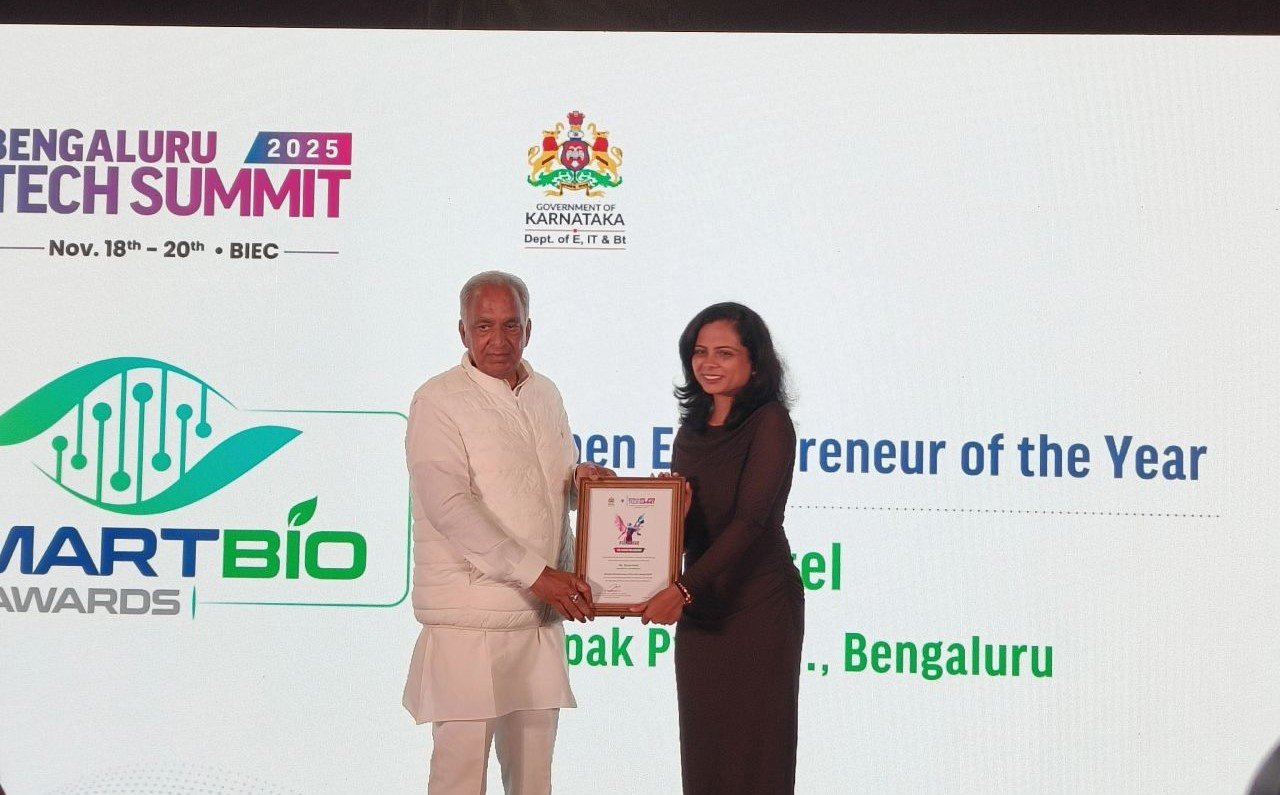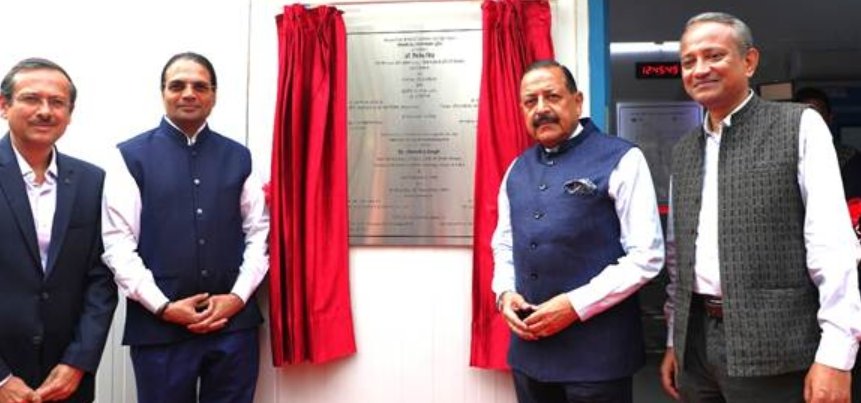Can Policy Reforms & Investments Trigger India’s MedTech Makeover?
July 31, 2025 | Thursday | Features | By Ayesha Siddiqui
India’s MedTech sector has long been import-dependent. The Centre is now working to change this by positioning the country as an export-oriented manufacturing hub. A series of policies and investments have been introduced to support this shift. Have these made an impact? What steps are necessary to strengthen India’s position in the global medical technology (MedTech) landscape? Let’s find out.
image credit- shutterstock
India stands as the fourth-largest medical devices market in Asia, trailing only Japan, China, and South Korea, and is counted among the top 20 markets worldwide. The sector is broadly categorised into five key segments: electronic equipment (56 per cent), disposables and consumables (26.5 per cent), in-vitro diagnostics (8.1 per cent), implants (7.1 per cent), and surgical instruments (2.3 per cent). (Source: Invest India)
Most domestic manufacturers are concentrated in the disposables and consumables segment, primarily serving local demand. In contrast, high-end categories such as electronic equipment remain dominated by multinational companies. The domestic industry comprises around 800 manufacturers, with production still focused on a limited set of product areas.
In 2023–24, India’s medical device exports crossed $4 billion, which is an impressive number on its own, but compared to imports which stood at nearly double, at $8.1 billion, it highlights the country’s continued reliance on foreign medical technologies, with nearly 80 per cent of its medical device requirements still met through imports. To address this imbalance and expand domestic manufacturing capacity, the government has set a goal to reduce import dependence to below 50 per cent over the next five years and has announced a slew of initiatives, investments, and incentives.
Government Initiatives: Have they moved the needle?
The government is pushing to transform the MedTech sector through policy reforms and targeted financial incentives, aiming to build self-reliance, drive innovation, and boost global competitiveness. This shift gained momentum in 2023 with the launch of the National Medical Devices Policy, which aims to position India as a global manufacturing and innovation hub. The policy sets ambitious goals: expanding India’s global market share in medical devices from less than 2 per cent to 10–12 per cent over the next 25 years, and growing the domestic market from $11 billion to $50 billion by 2030.
To complement manufacturing with innovation, the government launched the Promotion of Research and Innovation in Pharma MedTech Sector (PRIP) scheme in August 2023. With a total budget of Rs 5,000 crore, Rs 4,250 crore of which is dedicated to building the R&D ecosystem. PRIP seeks to transform India into a global R&D hub for medical devices and pharmaceuticals. To guide implementation, an industry dialogue was held in Mumbai in March 2025, involving stakeholders such as the Indian Council of Medical Research (ICMR), the Council of Scientific & Industrial Research (CSIR), the National Institutes of Pharmaceutical Education and Research (NIPERs), regulatory bodies, and industry associations. The Expression of Interest (EoI) portal opened shortly thereafter, accepting proposals until April 7, 2025.
In 2023, the government also launched MedTech Mitra, a strategic initiative designed to support MedTech startups and companies through clinical evaluation, regulatory facilitation, and new product adoption, providing end‑to‑end handholding from development to market entry.
To boost local manufacturing, the government launched the Production Linked Incentive (PLI) Scheme for Medical Devices in 2020–21, with a financial outlay of Rs 3,420 crore and a timeline extending to 2027–28. The scheme offers 5 per cent incentives on incremental sales of domestically manufactured devices across four high-value categories: radiotherapy and imaging equipment, anaesthesia devices, cardio-respiratory and critical care equipment, and implants. So far, 19 greenfield projects have been commissioned, leading to the local production of 44 devices—including MRI machines, CT scanners, mammography systems, C-arms, and ultrasound machines—that were previously imported. As of September 2024, cumulative sales by participating companies have reached Rs 8,039.63 crore, including exports worth Rs 3,844.01 crore.
In 2024, the Government of India has launched a Rs 500 crore scheme to boost domestic medical device manufacturing through five targeted sub-schemes: Rs 110 crore for common infrastructure like R&D labs and testing centres; Rs 180 crore for 10–20 per cent capital subsidies to support local production of components; Rs 100 crore for capacity building through Master's programmes and vocational training; Rs 100 crore for clinical studies including animal trials, human trials, and diagnostic evaluations; and Rs 10 crore to support industry associations in promoting MedTech innovation.
These efforts appear to be gaining traction. A key milestone was India’s entry into the International Medical Device Regulators Forum (IMDRF), signalling the country’s commitment to aligning with global quality and regulatory standards and paving the way for greater international collaboration. This growing credibility has been matched by rising investor interest. By August 2024, India’s MedTech sector had attracted over $1.2 billion in private equity and venture capital, the highest in five years. Foreign direct investment has also gained momentum. In just the first half of FY 2023–24, FDI stood at $425 million, reflecting growing confidence in the sector’s long-term potential.
But the question is, have these initiatives truly moved the needle? Experts believe that while these are welcome developments, the on-ground reality is more nuanced.
“India's push for a self-sufficient medical device industry, through initiatives like PLI and medical device parks, has shown promise but delivered limited ground-level results so far, especially for domestic manufacturers in low-margin sectors where we are usually not competitive with China. While the PLI has spurred investment in certain high-end areas, its overall impact remains narrow, with very few projects sanctioned and disbursed,” said Rajiv Nath, Managing Director, Hindustan Syringes & Medical Devices Ltd & Forum Coordinator, Association of Indian Manufacturers of Medical Devices (AiMeD).
Similarly, the Marginal Investment Scheme, Clinical Performance Scheme, Common Infrastructure Scheme, and Skilling Scheme announced by the Department of Pharmaceuticals in November 2023 are yet to gain meaningful traction. “These schemes need faster implementation to improve manufacturers’ competitiveness. While policy intent is strong and some progress has been made, India’s MedTech sector needs more consistent execution, wider participation, and accelerated infrastructure development to truly unlock its global potential,” added Nath.
According to a white paper by AiMeD and Consocia Advisory, developing high-end medical equipment requires substantial investment in R&D, testing, and clinical validation. At present, Indian manufacturers face both financial and bureaucratic hurdles in these areas. Government schemes like the PLI programme exist, but smaller companies often struggle to access the benefits due to complex application procedures and delays in disbursement. There are also limited targeted research grants or tax incentives specifically designed for critical care devices. Without strong policy support for innovation, such as grants for designing next-generation ventilators or funding to upgrade manufacturing capabilities, domestic firms risk falling behind global competitors. While initiatives like the India AI Mission have received Rs 10,000 crore in structured government support, the MedTech sector’s PRIP scheme has been allocated only Rs 5,000 crore, which experts argue is disproportionately low given the sector’s potential and its critical role in healthcare innovation and national preparedness.
Inside the MedTech Parks: Are they delivering?
India is steadily building a network of medical device parks to support domestic manufacturing, R&D, and innovation in the MedTech sector. Under the Rs 400 crore ‘Promotion of Medical Devices Parks’ scheme (2020–2025), four states—Uttar Pradesh, Tamil Nadu, Madhya Pradesh, and Himachal Pradesh have received approvals of Rs 100 crore each. Separately, the Department of Pharmaceuticals has also supported a superconducting magnet testing facility at AMTZ, Andhra Pradesh, under a common facility scheme.
The Andhra Pradesh MedTech Zone (AMTZ) in Visakhapatnam, launched in 2016, is fully operational and hosts over 100 companies focused on R&D and manufacturing. Hyderabad’s Medical Devices Park, active since 2017, houses over 50 firms making devices ranging from imaging systems to ICU and home-use equipment. Other key parks are under development: Solan (Himachal Pradesh) is focusing on radiology and implants; Gautam Buddh Nagar (Uttar Pradesh) is attracting IVD and diagnostic manufacturers; and Kancheepuram (Tamil Nadu) has received 28 investment proposals to produce stents, implants, and diagnostics. Ujjain (Madhya Pradesh) is targeting high-risk devices, while MedSpark in Thiruvananthapuram (Kerala) is being developed as a hub for manufacturing, research, and training. New parks are also planned in Rajkot (Gujarat) and Panipat (Haryana), featuring proposed testing labs, centres of excellence, and R&D facilities.
Together, these parks are expected to enhance India’s MedTech infrastructure, although several remain in various stages of development and await full operationalisation.
“The medical device parks model, exemplified by AMTZ's success in Visakhapatnam, offers shared infrastructure and reduced capital costs but faces operational delays and inconsistent implementation across other states due to restrictive criteria and underdeveloped facilities. Improved execution and stronger coordination between central and state policies, using AMTZ as a benchmark, are needed,” said Nath.
Global giants and local players fuel MedTech manufacturing
India’s ‘Make in India’ initiative in the MedTech sector has begun to show visible traction, with both multinational corporations and Indian companies scaling up their local manufacturing, R&D, and innovation capabilities. Several global players have expanded their operations in India, recognising its growing role in the global medical devices supply chain.
Medtronic, for instance, operates its largest R&D facility outside the United States in Hyderabad. The company has recently invested around Rs 3,000 crore to expand this facility further. The India innovation centres are not only engaged in traditional medical device development but are also focusing on building software capabilities for global product platforms.
Similarly, Siemens Healthineers—one of the approved participants under India’s PLI scheme—has invested Rs 91.9 crore to manufacture CT and MRI systems at its Bengaluru plant. The company has also introduced the Multix Impact E digital radiography systems from this facility. Siemens’ mobile C-arm system, Cios Fit, is fully conceptualised, designed, and manufactured in India and is now exported to over 64 countries. Additionally, the company has received approval to manufacture RT-PCR kits for mpox detection at its Vadodara site.
Philips Healthcare has also ramped up its ‘Make in India’ efforts. Over the past few years, the company has cumulatively invested around Rs 750 crore, including Rs 350 crore recently allocated to a new 300,000 sq ft R&D facility in Pune. This facility will focus on imaging and image-guided therapy technologies for global markets. The Pune centre already serves as a global hub for mobile surgery, exporting devices like the Zenition Mobile C-arm series to over 100 countries. In Bengaluru, Philips has invested an additional Rs 500 crore to establish its largest global innovation hub. Philips has also launched the Affiniti ultrasound machines as part of its India-made portfolio.
The India operation of Omron Healthcare, a japanese medtech company with $30 million in sales last year and growing at double digit has invested Rs 128 crore in its Chennai facility which is spread over 24000 square metres. The company will be rolling out about 1 million blood pressure monitors (BPM) per year from its Chennai facility with 'Made in India' log by December this year. The foundation for the facility was laid after signing the memorandum on the establishment of the factory on June 2, 2023 in the presence of M.K. Stalin, Chief Minister of the Tamil Nadu State Government.
Wipro GE Healthcare is another major player deepening its India footprint. The company recently announced a strategic investment of over Rs 8,000 crore over the next five years to enhance manufacturing capacity and R&D. This investment supports supply chain resilience and strengthens the company’s role in both domestic and international markets. Products like the Made in India PET CT Discovery IQ are now exported to 15 countries. Other locally manufactured devices include the Revolution Aspire CT, Revolution ACT, and MR breast coils—all developed ‘In India for the World.’ The company currently operates four manufacturing plants in Bengaluru, all export-focused. The latest facility was set up in March 2022 with a Rs 100 crore investment under the PLI scheme.
Spellman, the global leader in X-ray generator production, is set to establish its first-ever manufacturing facility in India at the AMTZ, a significant step in enhancing the country’s medical technology sector.
While multinational companies are deepening their footprint in India, local medical device manufacturers are also stepping up to reduce import dependence and drive indigenous innovation. Several Indian firms are now focusing on developing complex, high-end equipment that is traditionally imported.
In 2024, Meril inaugurated new manufacturing facilities under the PLI scheme and signed an MoU with the Gujarat government to invest Rs 910 crore. The company has already invested over Rs 1,400 crore in the MedTech sector. This expansion is expected to create 5,000 jobs and reduce imports of critical devices.
Efforts are also underway in the public sector and academia to accelerate the development of indigenous high-end technologies. The All India Institute of Medical Sciences (AIIMS), New Delhi, recently announced plans to install the country’s first indigenously developed 1.5 Tesla MRI machine by October 2025. The project is being executed in partnership with the Society for Applied Microwave Electronic Engineering and Research (SAMEER), an autonomous institution under the Ministry of Electronics and Information Technology.
IIT Kanpur is developing Hridayantra, India’s first indigenously designed left ventricular assist device (LVAD), aimed at helping patients with advanced heart failure. The implantable mechanical pump is expected to last 10–12 years and cost significantly less, Rs 10–15 lakh, compared to the global price of Rs 70–80 lakh.
Bengaluru-based Voxelgrids Innovations, India’s first and only manufacturer of MRI scanners, has received regulatory approval and launched the country’s first indigenously developed Magnetic Resonance Imaging (MRI) scanner.
SS Innovations, based in Gurugram, recently launched India’s first mobile tele-robotic surgery unit, SSI Mantra, marking a breakthrough in the country’s surgical capabilities.
Innovation is also being backed by institutional support. The Technology Development Board (TDB), under the Department of Science and Technology (DST), has extended financial support to Mysuru-based S3V Vascular Technologies for its project on manufacturing mechanical thrombectomy kits for acute ischemic stroke treatment. This initiative positions S3V as the first Indian company to design and manufacture a full suite of neuro-intervention devices—including microcatheters, aspiration catheters, guidewires, and stent retriever systems- in a fully integrated upstream facility.
Filling the gaps
All these initiatives and investments have propelled notable growth in India’s MedTech sector. However, structural challenges and limited policy support in key strategic areas continue to constrain the country’s global competitiveness.
“One challenge is the regulatory framework. Some stakeholders suggest the adoption of a separate decriminalised regulatory framework and an independent regulator for medical devices, like the Food Safety and Standards Authority of India (FSSAI) in the food sector. There are views that current regulations, which link medical devices closely with pharmaceuticals under a common Drug Law, may inhibit the independent implementation of Medical Device Rules. International guidance from the WHO and regulatory frameworks in markets such as the UK (Medicines and Healthcare products Regulatory Agency (MHRA), Canada (Health Canada), Singapore (Health Sciences Authority (HSA), and Malaysia’s Medical Devices Authority are often cited as references. The umbilical cord with pharma needs to be severed, as the bias of the drug rules at times overshadows the independent implementation of the Medical Device Rules. Medical devices, while classified as medical products, differ from medicines in that they are considered engineering goods. This distinction is like the way the Air Force, Navy, and Army each require unique treatment despite all being branches of the defence forces,” said Nath.
R&D in the sector is another area where India’s investment remains modest compared to global standards. While policies like the PRIP scheme and the creation of Centres of Excellence represent welcome positive developments, R&D activity tends to be fragmented and mainly led by the public sector.
“In comparison, countries such as China have promoted integrated ecosystems with significant private-sector involvement and incentives for advanced medical device manufacturing,” said Nath.
Manufacturing output in India is largely focused on low-value consumables and in-vitro diagnostics, with less emphasis on high-technology electronic or implantable devices. This focus limits participation in high-tech international trade.
“Some manufacturers indicate that public procurement policies sometimes favour imported products by requiring overseas regulatory approvals, potentially limiting market access for Indian producers. The few units that bravely invested need nurturing but at times they face challenges in public procurement instead of getting preference and support in pruning the paradoxical enlargement of the GTE (Global Tender Exemption) list even for those medical equipment available since long and from more than one licensed manufacturer, but also in some public tenders continue to discriminate and disallow Indian manufacturers to participate in bidding process by seeking a mandatory qualifying criteria of overseas US FDA and CE approval instead of seeking a Central Drugs Standard Control Organisation (CDSCO) manufacturing license. Some Buyers' reasoning is to filter out low-priced but low-quality Indian goods, which, in many cases, are relabelled, repackaged, and shoddy Chinese goods. For this, some manufacturers seek an amendment of labelling requirements in the Indian MDR’17 for alignment with Department for Promotion of Industry and Internal Trade - Public Procurement Order (DPITT- PPO) and Department of Pharmaceuticals (DoP)’s guidance requirements and the label to clearly state if the Manufacturer is level 1, i.e. with over 50 per cent domestic content, or level 2, with over 20 per cent domestic content or simply a Repackaging or relabelling company. This distinction will help buyers give preference to higher value-added medical devices,” said Nath.
There is also discussion about the alignment of Indian certification standards, such as BIS-based CDSCO certification, with international regulatory benchmarks. The introduction of the QCI’s Indian Certification of Medical Devices (ICMED) 13485 Plus aims to provide Indian manufacturers with internationally recognised quality compliance credentials. Aligning these certifications with other international certifications, such as the MDSAP and CE, is considered a possible approach for enhancing market access via mutual recognition agreements in trade negotiations.
“Some industry participants highlight the importance of a predictable nominal tariff policy to provide balanced protection for both domestic and foreign manufacturers, addressing Niti Aayog stated 15 per cent disability factors that affect the sector’s competitiveness,” said Nath.
India currently holds a modest 1.5 per cent share of the global medical devices market. To claim a larger share, the country has laid out an ambitious vision backed by policies, incentives, and investments. But achieving the $50 billion target and becoming Atmanirbhar will depend on sustained execution, stronger ecosystem integration, and the ability to scale both innovation and manufacturing.
Ayesha Siddiqui










